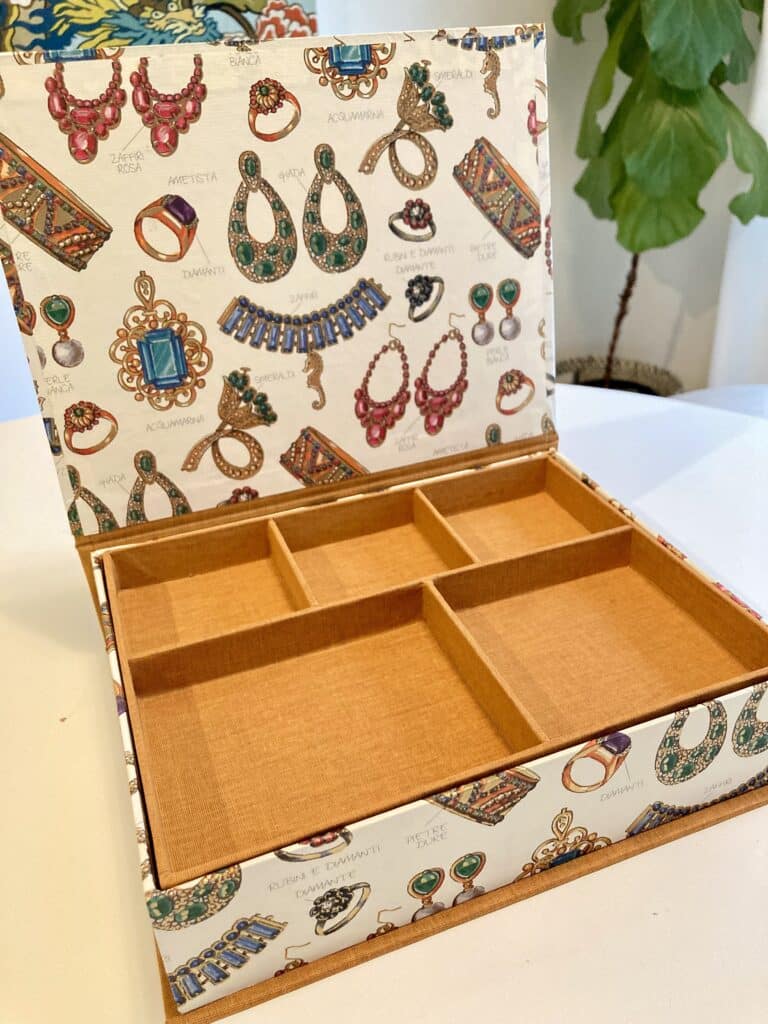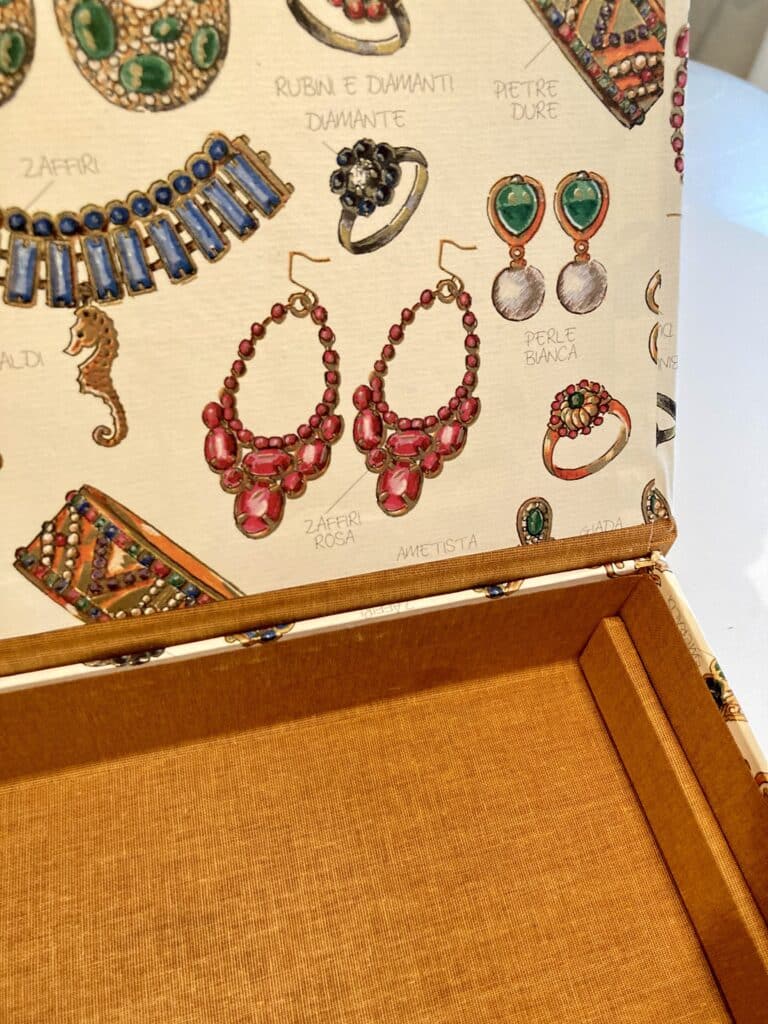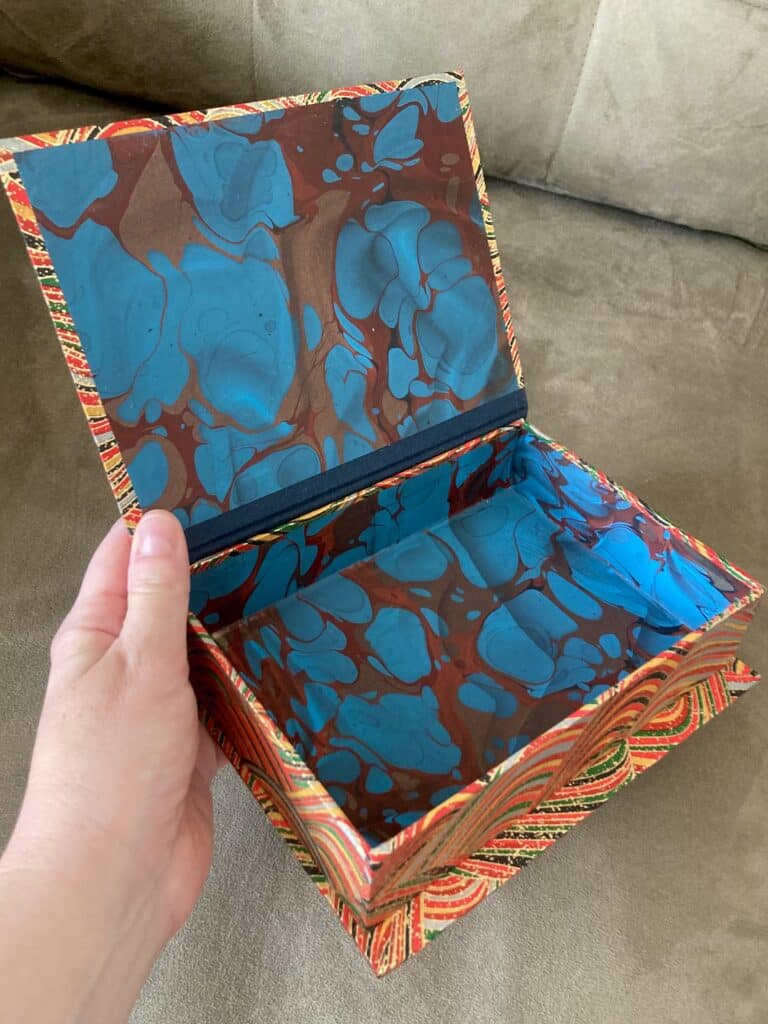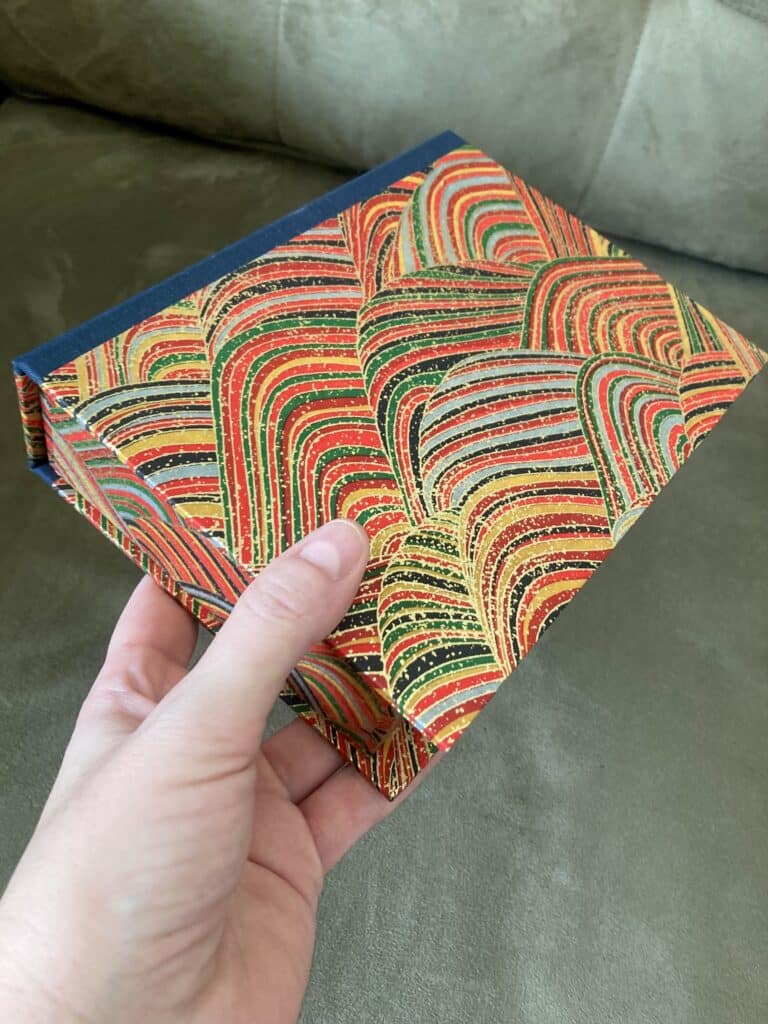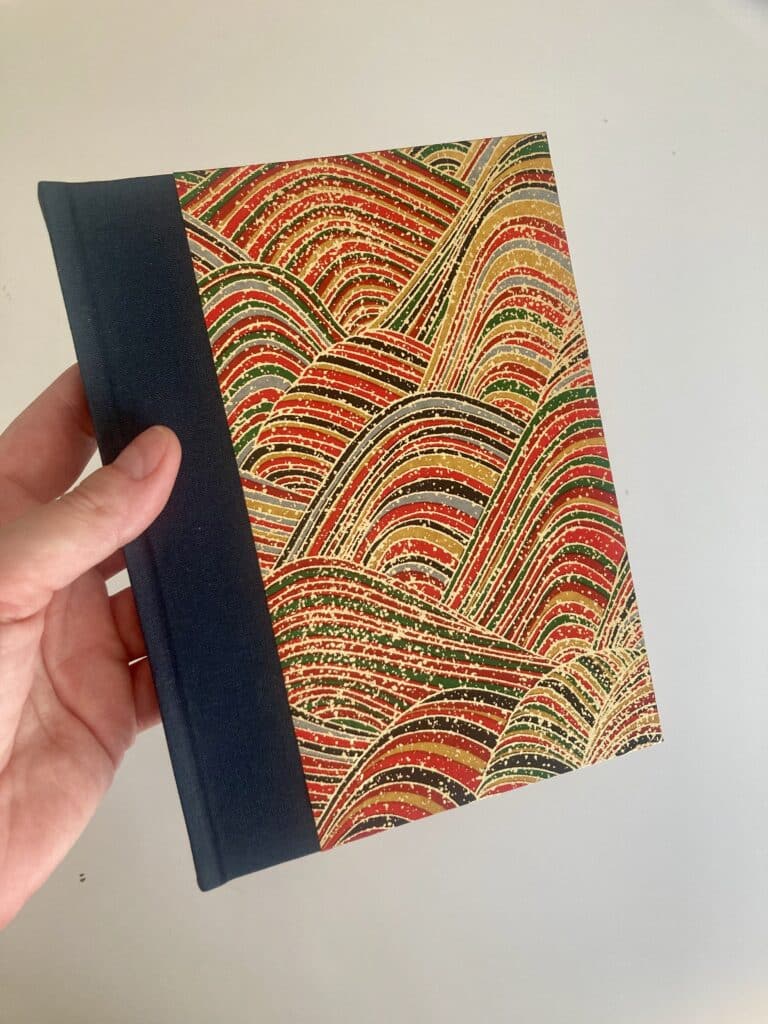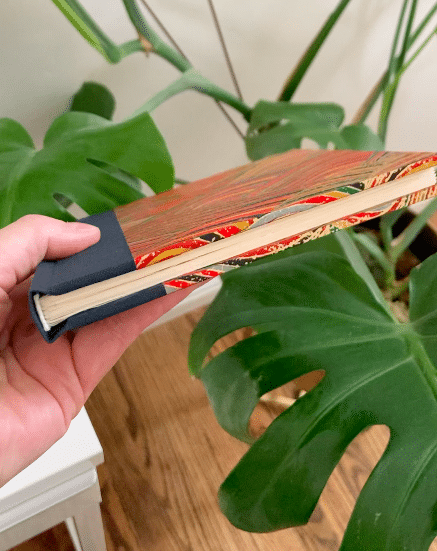I finished another project from the Constructing and Covering Boxes book. The book outlines every step you need to do and gives you all the measurements, so all you have to do is follow the instructions… and we know how I feel about that.
You even start with rectangles!
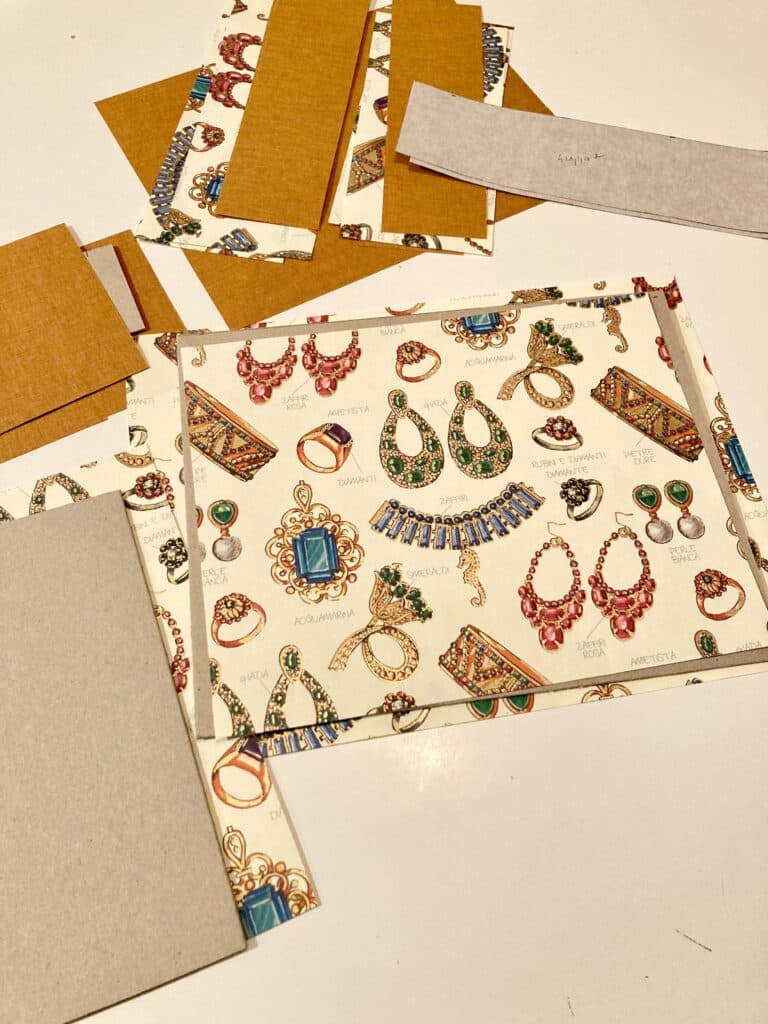
And you end up with something pretty impressive! 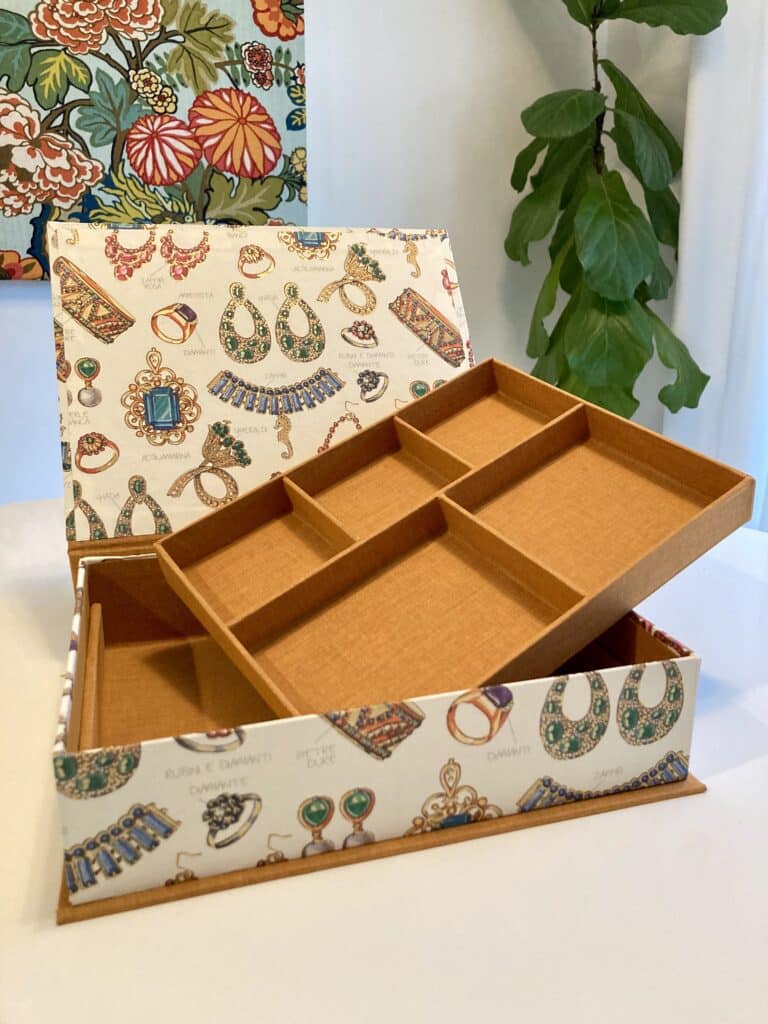
It’s interesting to compare this new hobby to sewing–there was a learning curve on the different papers, just like figuring out which fabric is best for which project. (This Florentine jewelry print is much thinner than the Japanese paper I used before so it wasn’t as forgiving when being glued). There’s figuring out how much material you need–I went through a whole half yard of bookcloth (I thought I’d use half of that). And much like pressing during sewing, you can really improve how things look by just rubbing them with a bone folder.
You can also see how box making evolved straight out of bookbinding: this is the base and lid for the box, but it could also be a hard cover for a (giant) book:
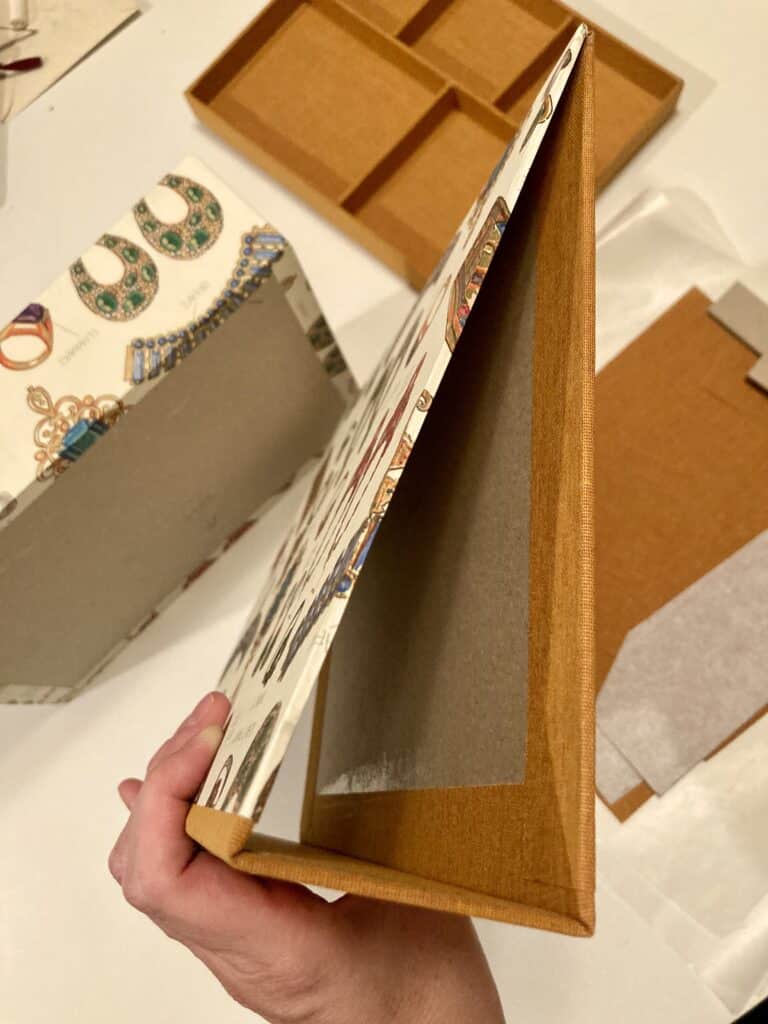
Look at how those pieces all fit together! Exactly like Legos–or even a quilt–but a lot faster. 